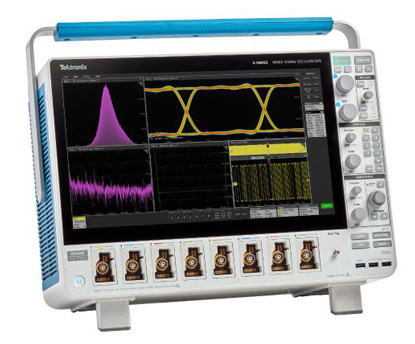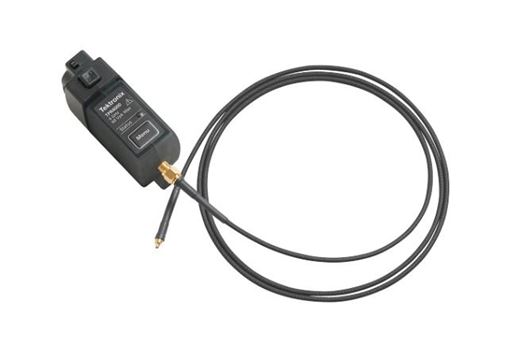
Power Distribution Networks (PDNs) must provide many low-noise DC power rails for sensitive loads such as microprocessors, DSPs, FPGAs and ASICs. The quest for more speed and higher density means faster edge rates, higher frequencies and more rails, with lower voltage levels and higher currents. This places pressure on design for both signal integrity and power integrity.
The goal of making power integrity measurements is to validate that the voltage and current reaching the Point of Load (POL) meet the load’s power rail specifications under all expected operating conditions. Special attention is required to accurately measure millivolts of power rail noise at GHz frequencies.
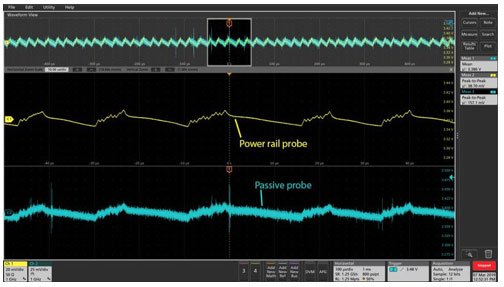 Measure high-frequency ripple
Measure high-frequency ripple
without blocking DC or loading
your power rails
Noise specifications on power rails can go up into MHz or GHz frequency
ranges with amplitudes in millivolts. This makes probing a challenge.
The high-impedance 10X passive probes that come with oscilloscopes may
have enough bandwidth, but they attenuate the very noise signal you’re trying
to measure. 1X probes pass the noise signal without attenuation, but they are
limited to several MHz bandwidth. Transmission line probes or cables with
50 Ω input impedance offer great high-frequency performance but cause
significant loading at DC.
The ideal probe for making power rail measurements offers high impedance
at DC and acts as a 50 Ω transmission line for high frequencies. Power rail
probes such as TPR1000 and TPR4000 are designed to meet these challenges
with high bandwidth,low attenuation and minimal loading.
Download the “Getting Started with Power Rail Measurements” application note
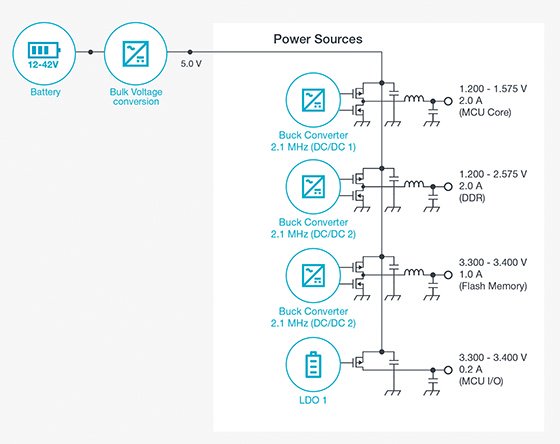 Dealing with supplies from 1 V to
Dealing with supplies from 1 V to
48 V and above
Although the main supply voltages for many FPGAs and SoCs have dropped
dramatically, these are not the only supplies to consider. On-chip I/O supplies
can cover a much wider range than the main logic supplies. Bulk supplies
feeding POL regulators or Voltage Regulator Modules (VRMs) are often much
higher voltage.
Although many scopes and probes can provide some DC offset, it may not be
enough to deal with all the power rails in your system. And at lower volts per
division (higher sensitivity) settings instrument systems tend to afford less offset.
While blocking DC is an option, it is often undesirable (see above).
In addition to addressing the high-frequency needs outlined above, power rail
probes such as TPR1000 and TPR4000 offer high offset range to address a
wide range of voltage levels.
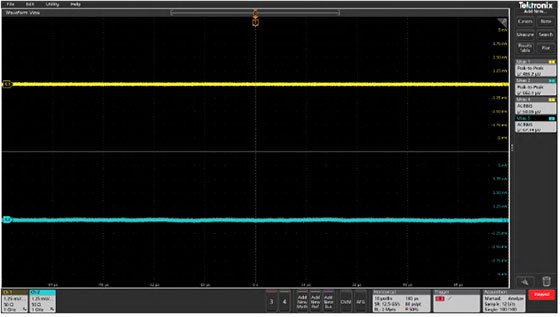 Minimizing measurement system noise contribution
Minimizing measurement system noise contribution
Measuring noise on the order of 10 mV requires careful attention to measurement
system noise. As noted above, using non-attenuating, or 1X, probes reduces the burden
on your oscilloscope’s amplifiers. The scope’s internal noise and measurement
resolution also play critical roles.
The 6 Series MSO includes a new front end with industry-leading noise performance.
The scope offers open channel noise as low as 50μVRMS and 466μVpeak. When
paired with TPR1000/4000 power rail probes, the system noise can be as low
as 70μVRMS.
The 6 Series offers 12-bit resolution at 12.5 GS/s. A High Res function
boosts resolution to 16 bits at 625 MS/s and below. 4 and 5 Series
MSOs also offer 12-bit resolution with up to 16 bits using High Res mode.
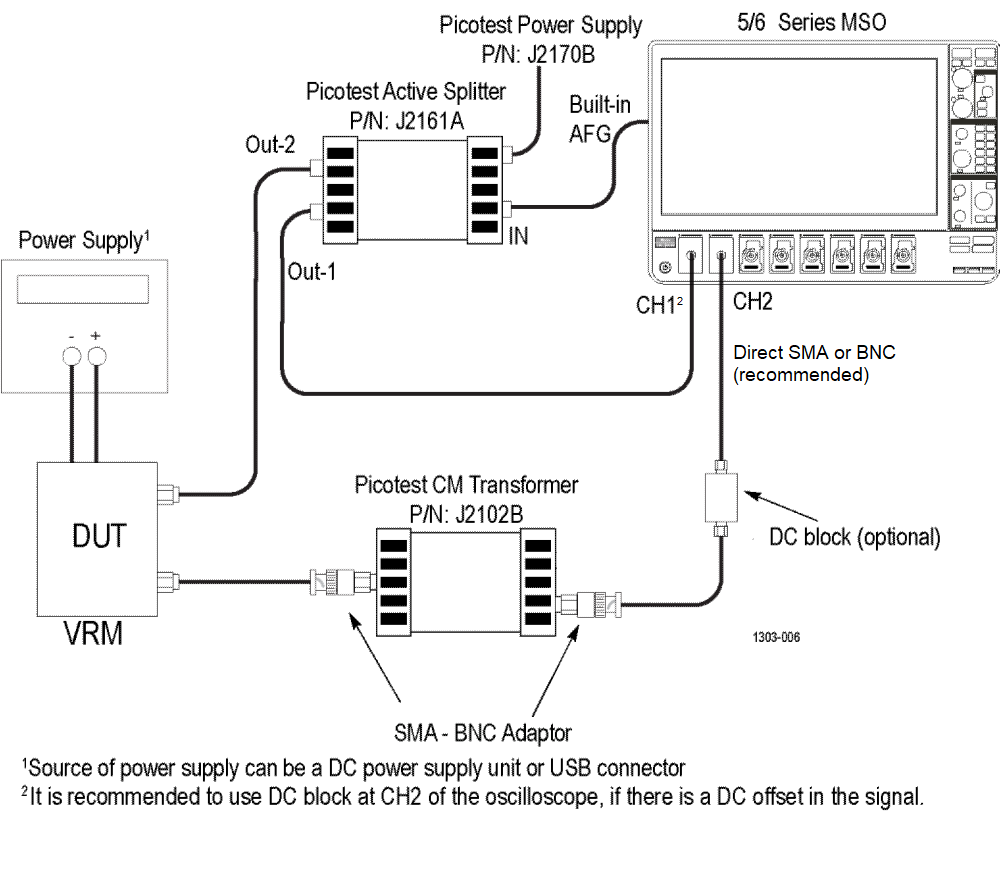 Measuring power distribution network impedance
Measuring power distribution network impedance
For PDNs powering FPGAs, processors and other complex IC’s, power rail
impedances must be low in order to deliver high current in response to rapidly
changing demand. However, the network is made up of many impedances
including the voltage regulator, decoupling capacitors, and PCB traces. High-
speed switching involves broadband frequencies and unexpected variations in
impedance can result in excessive transients or noise. Measuring the impedance
of a network design over a wide frequency range provides confidence that the
network won’t produce unwanted surprises.
Network impedance measurements are traditionally performed using VNAs,
such as the two-port TTR500 which can measure from 100 kHz to 6 GHz.
5 and 6 Series MSO oscilloscopes can measure power rail impedance down
to 10 Hz using analysis software, a signal generator (built-in or AFG31000 Series),
and an isolation transformer.
Measuring impedance on a power plane
PWR Application Note
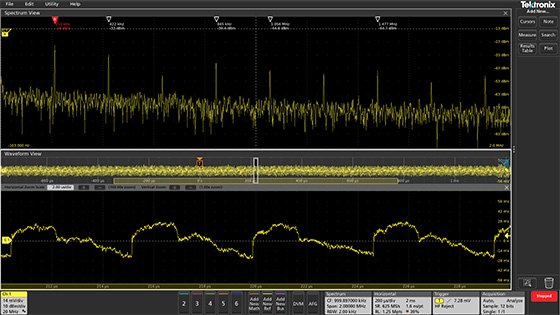 Characterizing noise using simultaneous spectrum and waveform analysis
Characterizing noise using simultaneous spectrum and waveform analysis
Let’s say you’ve measured the power rail noise and it’s out of spec. Is it coming f
rom a DC-DC converter? The bulk supply? A PLL? A clock? Crosstalk? Spectrum
analysis can provide clues to noise sources – helping to correlate noise frequencies
to switching frequencies and harmonics.
A spectrum analyzer such as an RSA306 connected to your power rail with a DC
block can help provide insight into your noise. The FFT function on your scope is also
useful, but these functions use the sample clock on your scope, making it difficult or
impossible to look at the spectrum and voltage waveforms at the same time.
The unique spectrum view on 4, 5 and 6 Series MSOs provide independent
spectrum analyzer controls so you can see synchronized time domain spectrums
and frequency domain waveforms at the same time.
Spectrum View Application Note
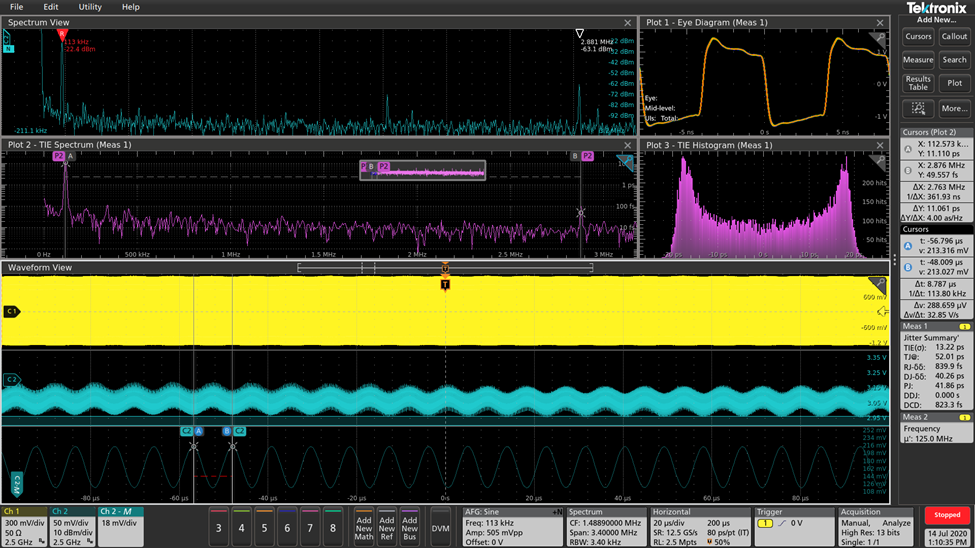 Power rail noise impacts clock and
Power rail noise impacts clock and
data signal jitter
Noise on power rails often translates into jitter on high-speed data lines. Jitter
and power integrity should be analyzed in both the time and frequency domains.
Comparing periodic jitter (PJ) frequencies in the TIE spectrum to spurs in the
power ripple spectrum is a fast and accurate way to identify signal integrity
problems caused by a power distribution network (PDN). This type of analysis
requires an oscilloscope with good spectrum analysis capability as well as good
jitter analysis.
Learn about using mixed signal oscilloscopes to diagnose jitter
caused by power integrity problems
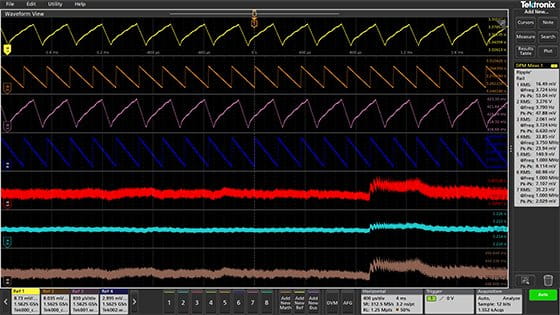 Faster power rail measurements with
Faster power rail measurements with
automated analysis software
Making even simple measurements such as ripple, overshoot, and undershoot
on dozens of power rails requires significant time and attention to detail.
The 5 and 6 Series MSOs are available with Digital Power Management software
to automate these repetitive measurements and generate in-depth reports.
The software also includes jitter analysis (TIE, RJ, DJ and Eye measurements) to
check for excessive jitter on clocks and communications signals powered by
your PDN.
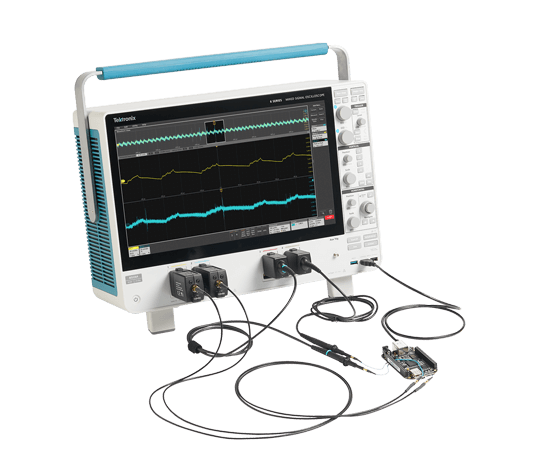
Power Integrity Analysis Reference System
6 Series B MSO
Recommended for exceptionally low noise, 12-bit resolution, and up to 8 channels. From 1 to 10 GHz. Built-in arbitrary/function generator (AFG) recommended for impedance measurements
Noise Analysis
-
DPM software
Optional analysis software automates ripple, overshoot, under-shoot, turn-on, turn-off, time-trend, settling time, and jitter measurements
-
TPR Power Rail Probes
Low noise and high offset range at up to 4 GHz with DC offset ranging from -60 to +60 Vdc
Impedance Analysis
-
PWR software
Optional analysis software automates power quality, harmonics, amplitude, timing, switching loss, magnetic analysis, and frequency response analysis (control loop analysis, PSRR and impedance) measurements
-
Active Splitter (e.g Picotest J2161A, not shown)
Splits signal from oscilloscope’s AFG into an oscilloscope input channels and into the power rail under test.
-
Common Mode Transformer (e.g. Picotest J2102B-BNC, not shown)
Eliminates ground loop error in 2-port shunt-through impedance measurements.

 KALİBRASYON LABORATUVARI
KALİBRASYON LABORATUVARI
 Measure high-frequency ripple
Measure high-frequency ripple Dealing with supplies from 1 V to
Dealing with supplies from 1 V to Minimizing measurement system noise contribution
Minimizing measurement system noise contribution Measuring power distribution network impedance
Measuring power distribution network impedance Characterizing noise using simultaneous spectrum and waveform analysis
Characterizing noise using simultaneous spectrum and waveform analysis Power rail noise impacts clock and
Power rail noise impacts clock and Faster power rail measurements with
Faster power rail measurements with
